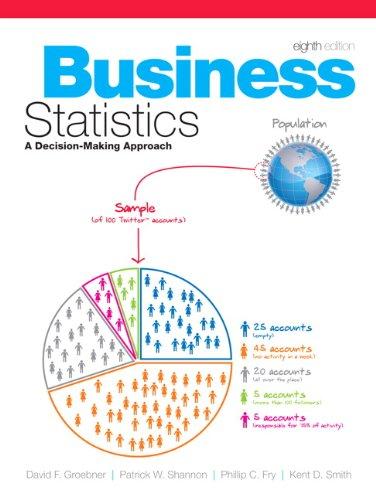Anyone who has gone into a supermarket or discount store has walked by displays at the end
Question:
Anyone who has gone into a supermarket or discount store has walked by displays at the end of aisles. These are referred to as endcaps and are often prized because they increase the visibility of products. A manufacturer of tortilla chips has recently developed a new product, a blue corn tortilla chip. The manufacturer has arranged with a regional supermarket chain to display the chips on endcaps at four different locations in stores that have had similar weekly sales in snack foods. The dollar volumes of sales for the last six weeks in the four stores are as follows:
Store Week 1 2 3 4 1 $1,430 $ 980 $1,780 $2,300 2 $2,200 $1,400 $2,890 $2,680 3 $1,140 $1,200 $1,500 $2,000 4 $ 880 $1,300 $1,470 $1,900 5 $1,670 $1,300 $2,400 $2,540 6 $ 990 $ 550 $1,600 $1,900
a. If the assumptions of a one-way ANOVA design are satisfied in this case, what should be concluded about the average sales at the four stores? Use a significance level of 0.05.
b. Discuss whether you think the assumptions of a one-way ANOVA are satisfied in this case and indicate why or why not. If they are not, what design is appropriate? Discuss.
c. Perform a randomized block analysis of variance test using a significance level of 0.05 to determine whether the mean sales for the four stores are different.
d. Comment on any differences between the means in parts b and c.
e. Suppose blocking was necessary and the researcher chooses not to use blocks. Discuss what impact this could have on the results of the analysis of variance.
f. Use Fisher’s least significant difference procedure to determine which, if any, stores have different true average weekly sales.
Step by Step Answer:

Business Statistics A Decision Making Approach
ISBN: 9780136121015
8th Edition
Authors: David F. Groebner, Patrick W. Shannon, Phillip C. Fry, Kent D. Smith






